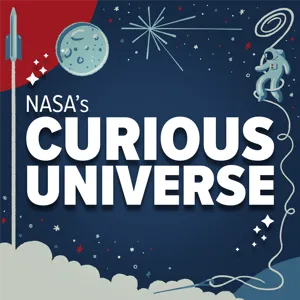Podcast Summary
Discovering Diverse Exoplanets: Through advanced technology and innovative methods, scientists have discovered over 4,000 exoplanets, expanding our understanding of the universe and revealing its imaginative and diverse nature.
The discovery of exoplanets, or planets outside our solar system, has been a source of endless surprises and excitement for scientists. Before the first discoveries, our understanding of solar systems was limited to our own. But as technology advanced and we began to find planets that didn't fit our preconceived notions, we realized just how imaginative and diverse the universe is. With an estimated 100 million exoplanets in our galaxy alone, the potential for discovery is vast. These planets come in all shapes and sizes, with some orbiting very close to their stars and others misaligned with each other. The average exoplanet is 100 or 1000 light years away, making direct observation a challenge. Instead, scientists use methods like the transit method, which relies on the alignment of planets as they pass in front of their stars, blocking some of the star's light. The discovery of exoplanets not only expands our understanding of the universe, but also sheds light on our own solar system and the Earth's place in it.
Exploring the Universe: Discovering Exoplanets and their Atmospheres: Through space missions and the transit method, we're discovering thousands of exoplanets and studying their atmospheres, leading to surprising findings like helium vapor and various molecules.
We are currently in the first generation of humans able to answer age-old questions about the existence and composition of exoplanets using data from space missions. Researchers like Nicole Colon use the transit method to detect exoplanets and study their atmospheres, sometimes dealing with overlapping signals from multiple planets orbiting the same star. Surprising discoveries, such as helium vapor and various molecules, have been made in the atmospheres of these planets. The NASA Exoplanet Archive, where Jesse works, organizes and maintains information about these planets, which are named based on the star they orbit. With over 4,000 known exoplanets and more being discovered, it's essential to keep track of their properties and characteristics. Despite the often boring names, the exploration of exoplanets continues to uncover new and exciting information about the universe.
Transforming Exoplanet Data into Music: Astronomers convert exoplanet data into music, with each note representing a new discovery and tone reflecting orbital period, showcasing rapid Kepler mission finds and inspiring curiosity about unexplained phenomena.
Astronomers are using innovative methods to explore the vast amount of exoplanet data being discovered, transforming it into engaging and informative forms like data sonification. This technique translates planetary information into sound, with each note representing a newly discovered exoplanet and the tone reflecting its orbital period. The resulting music reflects the rapid pace of exoplanet discoveries, particularly those made by NASA's Kepler mission. Astrophysicist Nicole Colon, who has contributed to several exoplanet discoveries, shared her excitement about the process and her favorite discovery, KELT 11 b, a giant, fluffy planet with a density similar to Styrofoam. Despite the growing number of exoplanets, Colon remains intrigued by the mysteries they present, such as KELT 11 b's low water content, which cannot be explained by current planet formation theories. The exploration of these wacky exoplanets continues to challenge and inspire scientists.
Exploring Potential Habitable Exoplanets: Despite discovering several potentially habitable exoplanets, we cannot confirm their existence or suitability for human life due to noisy data and uncertainty about their conditions.
While scientists have discovered several exoplanets, including Kepler 452b and the seven Earth-sized planets in the TRAPPIST-1 system, that might be able to support liquid water on their surfaces, we cannot yet confirm their existence or suitability for human life. The data is noisy, and it's unclear if these planets truly exist or have conditions similar to Earth. For instance, Kepler 452b, which is a little bigger than Earth and would have higher surface gravity, might make walking difficult. NASA's discovery of Earth-like planets in other star systems has sparked excitement, but we are still far from being able to send probes to explore them directly. It's essential to remember that Earth is the only habitable planet we know of in our solar system, and we must take care of it.
Discovering Exoplanets: Expanding Our Understanding of the Universe: Thousands of exoplanets discovered, each with unique characteristics, fuel curiosity about life beyond Earth and expand scientific knowledge
The discovery of exoplanets is expanding our understanding of the universe and our place in it. These faraway worlds come in various sizes, atmospheres, and chemical compositions, each with unique characteristics. The ongoing search for life beyond Earth is a major goal for astronomers, and NASA is leading the way with missions like TESS and the upcoming James Webb Space Telescope. With thousands of known exoplanets and tens of thousands more expected to be discovered, we're getting closer to answering fundamental questions about the prevalence of life in the galaxy. This curiosity-driven research not only advances our scientific knowledge but also fuels our sense of wonder and connection to the cosmos.






